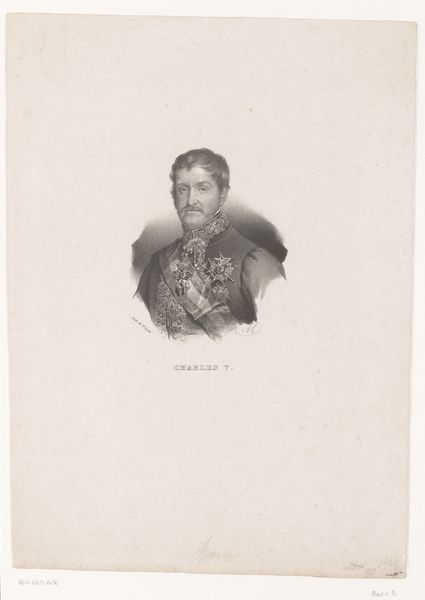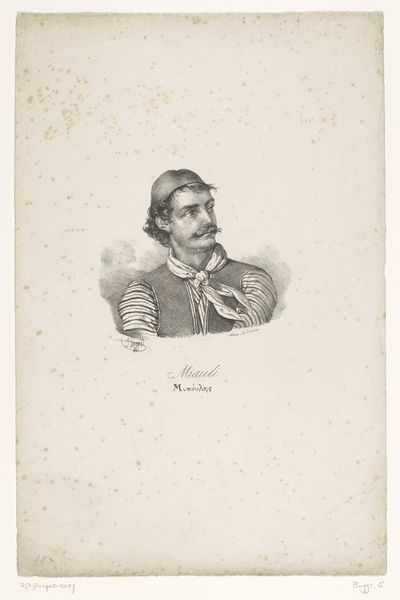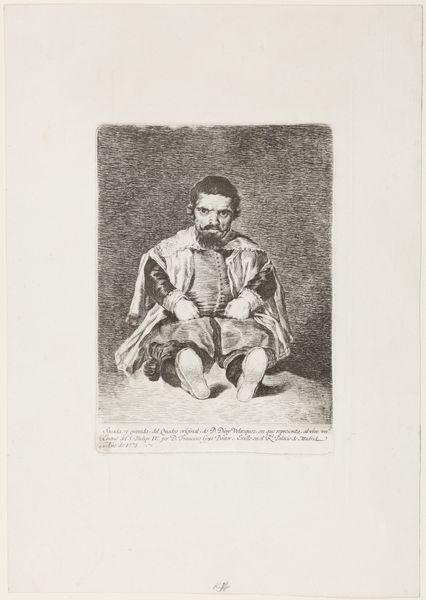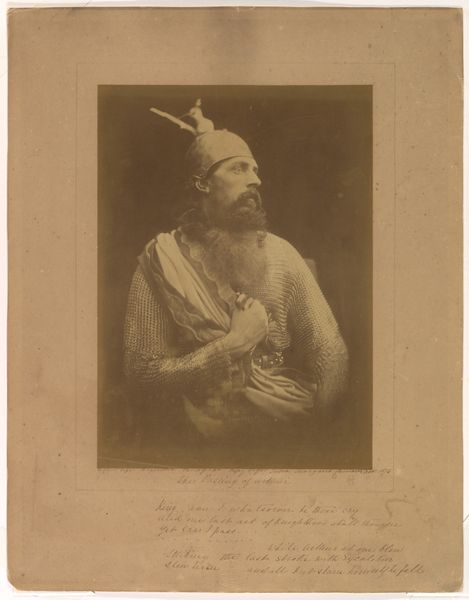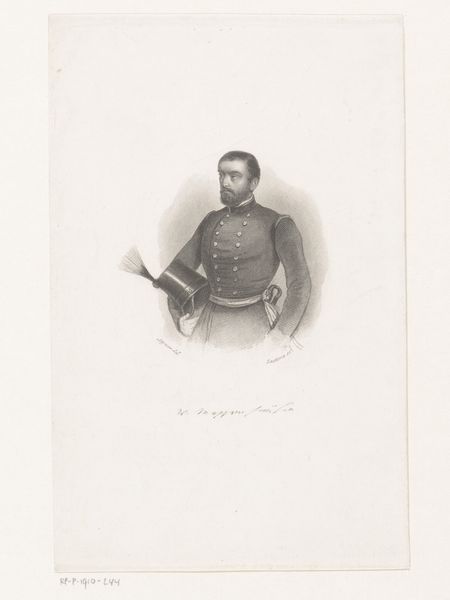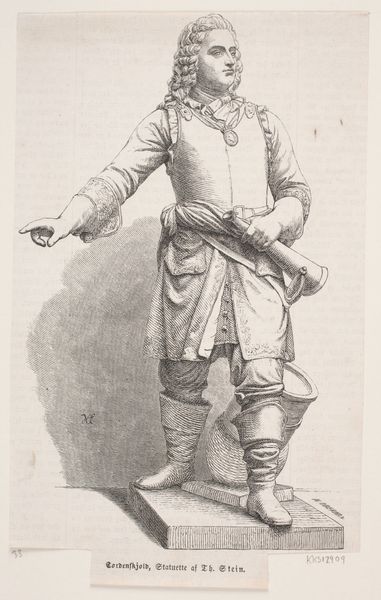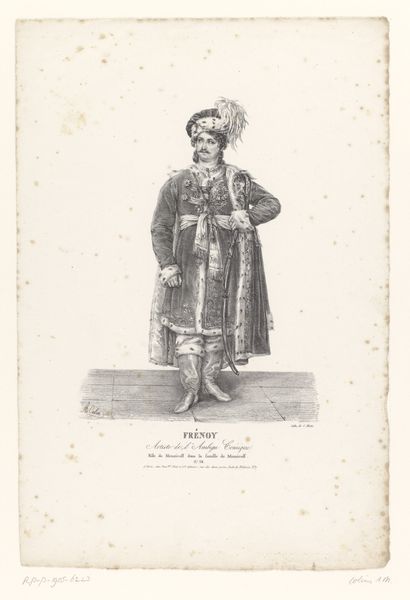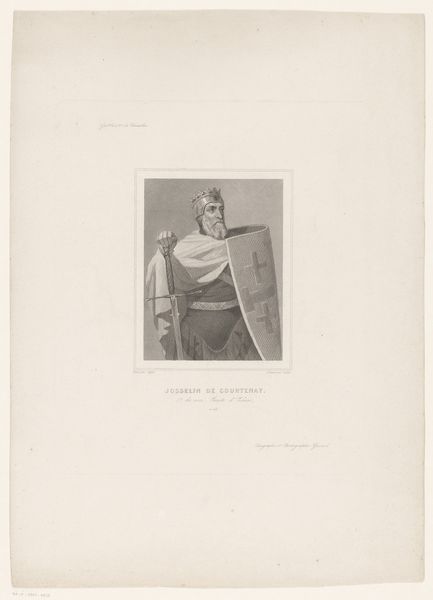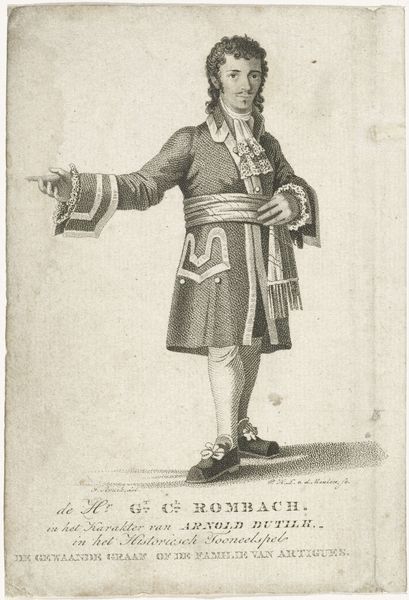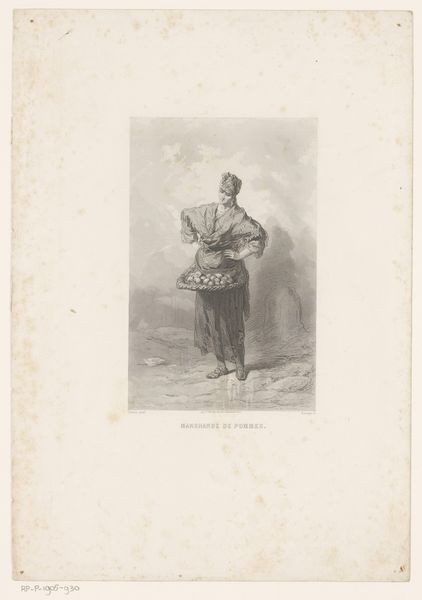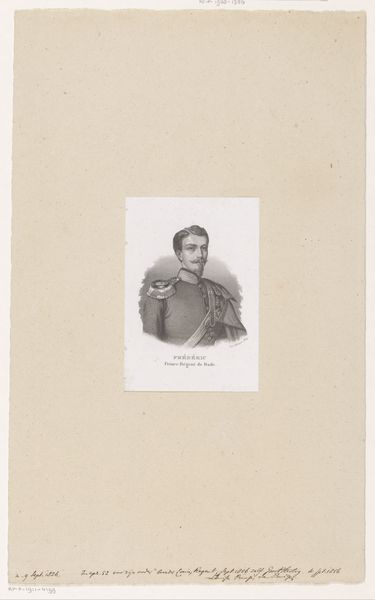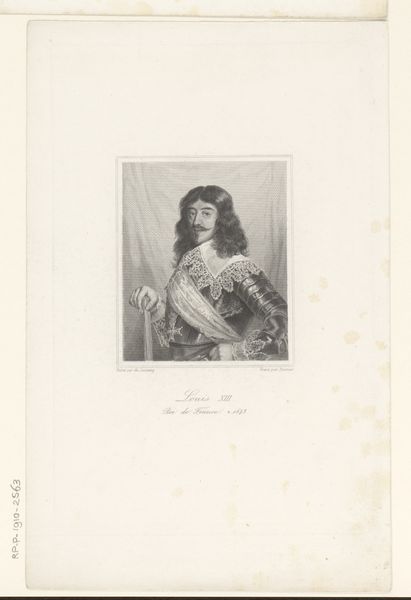
print, engraving
#
portrait
# print
#
figuration
#
personal sketchbook
#
orientalism
#
engraving
#
realism
Dimensions: height 278 mm, width 210 mm
Copyright: Rijks Museum: Open Domain
Curator: I’m drawn to the immediate intensity in this printed portrait. The detailed rendering brings Ibrahim Pasha to life. Editor: Indeed. Let’s contextualize this image. What we see here is a print of Ibrahim Pasha, dating sometime between 1824 and 1899, created by C. Dittmarsch. The work reflects a fascination with Ottoman figures that falls squarely within the orientalist aesthetic. Curator: Precisely. One can interpret this artwork as more than a mere portrait. Consider the rise in power and influence that Ibrahim Pasha exerted in Egypt and beyond. As an adoptive son of Muhammad Ali, he was integral in creating an independent Egyptian state, but the details embedded here speak volumes about representations of power at the time. His clothing is presented as distinctly "Eastern," reflecting a European gaze and exoticising the subject. Editor: I notice the detailed rendering, though. Look closely at the textures in his garments, and observe how his gaze follows us even as he remains partially turned away. Note the meticulous, realist handling of line in this engraving. The artist seems very concerned with precision and likeness. Curator: The use of "realism," as it were, doesn’t necessarily negate the power dynamics inherent in these types of images. His power, his very identity, are translated through a visual language that served European interests. Remember, that realism, in this instance, might be used as an authoritative marker, implying scientific accuracy to something which carries significant social baggage. Editor: You're quite right, the visual style cannot be extracted from its ideological implications. Nevertheless, I think the artist shows great control over light and shadow, giving depth and gravity to this imposing figure, whatever his political status was. Curator: And that tension, that layering of aesthetic quality and political narrative, makes the print so compelling even now. I find myself reconsidering my own assumptions, which I think is something particularly relevant to these times. Editor: Me too; this encounter highlighted the layers in play whenever we're facing history.
Comments
No comments
Be the first to comment and join the conversation on the ultimate creative platform.
